News
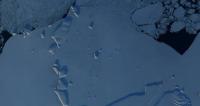
UTexas-NASA Study Sees New Threat to East Antarctic Ice
Researchers have discovered two seafloor troughs that could allow warm ocean water to reach the base of Totten Glacier, East Antarctica's largest and most rapidly thinning glacier.
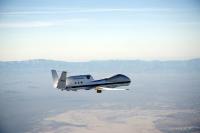
NASA and Partners begin 2015 CAST ATTREX Mission
NASA scientists will study the movement of water vapor and greenhouse gases in the tropical tropopause region during this year's CAST ATTREX Mission

NASA Brings the Spirit of Adventure into the Classroom
Across the United States and around the world, students now can participate in deployed NASA Airborne Science Missions.
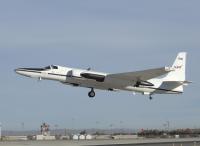
NASA Aircraft, Spacecraft Aid Atmospheric River Study
NASA is part of a major field campaign studying intense atmospheric river storms from the ocean, land, air and space.
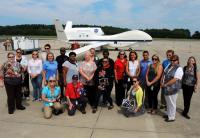
NASA Hurricane Mission Connects to K-12 Classrooms
The HS3 team shared the excitement of their scientific mission with K-12 students and teachers across the United States through summer teacher workshops, educator days at NASA Wallops, in-person classroom visits by mission personnel, live remote classroom chats and flight/hurricane tracking.

NASA Data Peers into Greenland’s Ice Sheet
Scientists using ice-penetrating radar data collected by NASA’s Operation IceBridge and earlier airborne campaigns have built the first-ever comprehensive map of layers deep inside the Greenland Ice Sheet.
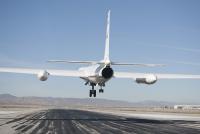
NASA Airborne Science Aircraft Monitoring the Environment
Climate scientists are using NASA's flying assets to gather information about how the global Earth system is changing and how it is predicted it may change in the future.
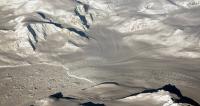
West Antarctic Melt Rate Has Tripled: NASA-UC Irvine
Airborne measurements along with data from satellite observations and other sources shows that the melt rate of portions of West Antarctica has tripled in the last 10 years.
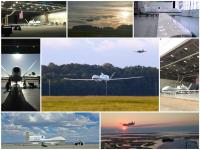
HS3 Hurricane Mission Investigated Four Tropical Cyclones in 2014
NASA's Hurricane and Severe Storm Sentinel, or HS3, mission investigated four tropical cyclones in the 2014 Atlantic Ocean hurricane season: Cristobal, Dolly, Edouard and Gonzalo. The storms affected land areas in the Atlantic Ocean Basin and were at different stages during the investigations.

NASA Airborne Campaigns Tackle Climate Questions from Africa to Arctic
Five new NASA airborne field campaigns will take to the skies starting in 2015 to investigate how long-range air pollution, warming ocean waters, and fires in Africa affect our climate.

IceBridge 2014 Antarctic Campaign Concludes
NASA’s Operation IceBridge completed four more surveys of the Antarctic, bringing the mission’s six-week-long field campaign to a close.

NASA: Alaska Shows No Signs of Rising Arctic Methane
Despite large temperature increases in Alaska in recent decades, a new analysis of NASA airborne data finds that methane is not being released from Alaskan soils into the atmosphere at unusually high rates, as recent modeling and experimental studies have suggested. The new result shows that the changes in this part of the Arctic have not yet had enough impact to affect the global methane budget.

Visitors Fly with NASA’s Operation IceBridge
NASA’s Operation IceBridge hosted two high-profile visitors, U.S. Ambassador to Chile Michael Hammer and NASA Chief Scientist Ellen Stofan.
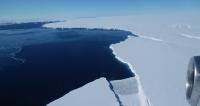
USS Constellation and Thurston Island
NASA’s Operation IceBridge collected some rare images on a flight out of Punta Arenas, Chile on a science flight over western Antarctica dubbed Ferrigno-Alison-Abbott 01.
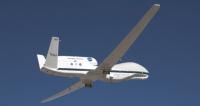
Global Hawks Mark Five Years of NASA Science Flights
NASA's pair of remotely operated Global Hawk Earth science aircraft marked a milestone on Oct. 23, the fifth anniversary of the first NASA flight by a Global Hawk aircraft.

It's Alive! Ames Engineers Harvest and Print Parts for New Breed of Aircraft
It's more an engineer's dream than nightmare - to rapidly prototype and redesign aircraft using 3-D printed parts. That's just what a team of student interns and engineers at NASA's Ames Research Center in Moffett Field, California, got to do: custom-build aircraft by repurposing surplus Unmanned Aerial Vehicles (UAVs). Grafting fuselages side-by-side adds more motors, propellers and batteries to improve power and performance capacity. By lengthening the wings, the team was able to improve aerodynamic efficiency and help extend the flight time of small, lightweight electric aircraft.
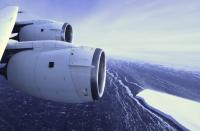
NASA Begins Sixth Year of Airborne Antarctic Ice Change Study
NASA is carrying out its sixth consecutive year of Operation IceBridge research flights over Antarctica to study changes in the continent’s ice sheet, glaciers and sea ice. This year’s airborne campaign, which began its first flight Thursday morning, will revisit a section of the Antarctic ice sheet that recently was found to be in irreversible decline.

ARISE Researchers Close out Alaska Field Campaign
Data from ARISE will help scientists understand the relationship between ocean and ice surfaces and clouds and the role that relationship plays in the overall climate system. In addition, ARISE data will help researchers further improve methods of interpreting satellite data in the Arctic.

Preparing For Antarctic Flights in the California Desert
NASA IceBridge scientists conduct GPS-guided ground tests at El Mirage to aid calibration of laser altimeter for precise readings over Antarctica.

Global Hawk 872 Return Marks 100th NASA Flight
High-altitude science aircraft hits milestone on its return to NASA Armstrong Sept. 30 after 10 science flights in NASA's 2014 HS3 mission.

NASA's HS3 Looks Hurricane Edouard in the Eye
Scientists on NASA's HS3 mission got lucky on September 17 when the remotely piloted Global Hawk dropped a sonde that fell in Hurricane Eduoard's eye and spun all the way down to the surface

NASA Langley Science Team ‘Delighted’ with Early SABOR Data
A team of researchers from NASA's Langley Research Center recently spent almost three weeks testing the waters — literally — from an airplane as part of a collaborative field campaign called Ship-Aircraft Bio-Optical Research, or SABOR.
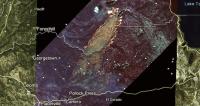
NASA ER-2 Captures Image of King Fire in Sierras
MASTER spectrometer image overlaid on a Google Earth photo graphically depicts the fire's boundaries in the visible through thermal infrared spectrum.

HS3 Mission Time-lapse Video Highlights Storms
NASA released a time-lapse video that highlights three different cameras aboard NASA's remotely piloted Global Hawk aircraft No. 872 as it investigated two tropical systems in the Atlantic Ocean in early September 2014.
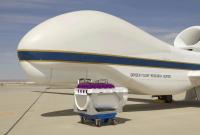
NASA HS3 Instrument Views 2 Dimensions of Clouds
NASA’s Cloud Physics Lidar instrument is studying the changing profile of the atmosphere to learn more about how hurricanes form and strengthen.
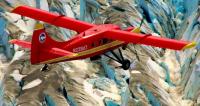
NASA Airborne Campaigns Focus on Climate Impacts in the Arctic
Over the past few decades, average global temperatures have been on the rise, and this warming is happening two to three times faster in the Arctic.
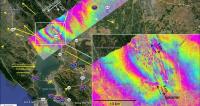
NASA Research Aids Response to California Napa Quake
NASA data and expertise are proving invaluable in California’s ongoing response to the Aug. 24 magnitude 6.0 earthquake in Napa Valley, northeast of San Francisco.
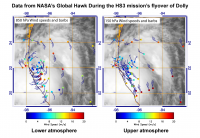
NASA's HS3 Mission Investigates Tropical Storm Dolly
One of NASA's unmanned Global Hawk aircraft number 872 surveyed Tropical Storm Dolly as part of NASA's latest hurricane airborne mission known as the Hurricane and Severe Storm Sentinel, or HS3 mission.
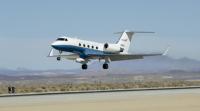
NASA Radar System Surveys Napa Valley Quake Area
Sophisticated JPL airborne radar system scans earthquake fault displacements in Northern California's Napa Valley after major quake Aug. 24.

Hurricane Mission Begins with Global Hawk Flight to Cristobal
The first of two unmanned Global Hawk aircraft landed at NASA's Wallops Flight Facility in Wallops Island, Virginia, on Aug. 27 after surveying Hurricane Cristobal for the first science flight of NASA's latest hurricane airborne mission.
